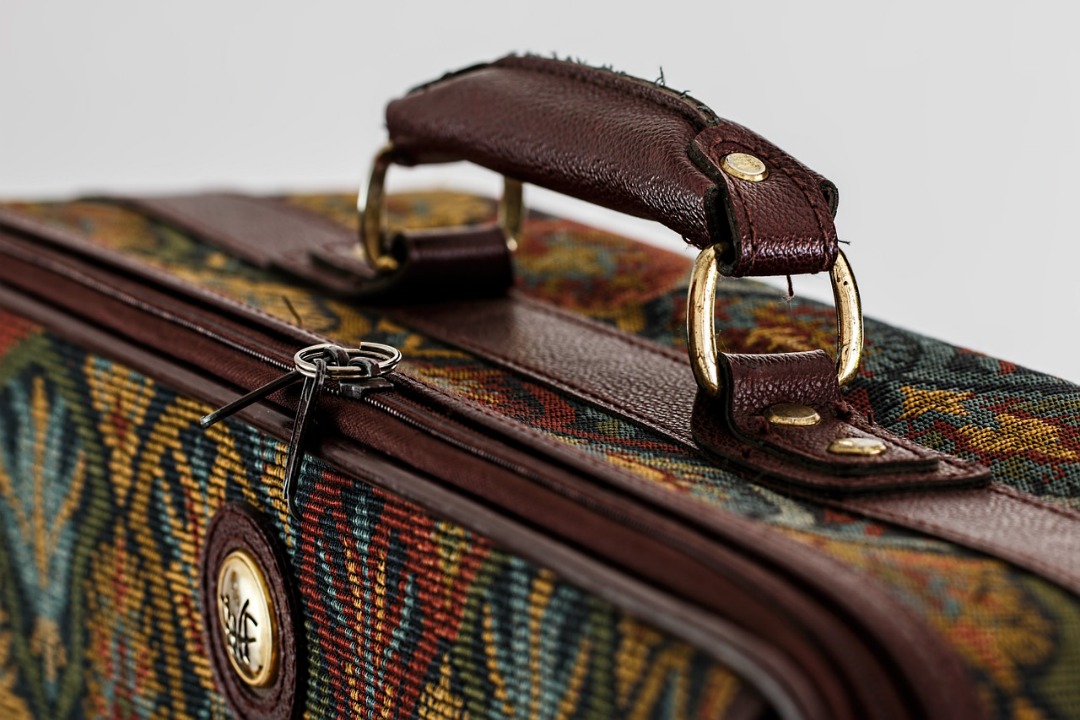I’ve posted before about how to choose and pack a carry-on bag–the “personal item” you’re allowed to take on board a plane. Today I’m going to focus on offering tips for packing your carry-on suitcase. If you’re the sort of person who finds it tough to travel light, this post is especially for you!
There are four main things to consider, when it comes to packing for carry-on travel.
1. Choose the right suitcase
Your suitcase must meet the standard size requirements: no larger than 22″ tall, x 14″ wide, x 9″ deep. (The easiest way to remember that? The sum of height, width, and depth measurements should not exceed 45 inches.) If you bag doesn’t fit those requirements, you may not be allowed to carry it on board. And even if you are, that bag will be one of the first items set aside to be checked through to your destination when the overheard bins start to fill up.
Play it safe and don’t push the boundaries. That’s your best chance for keeping your suitcase under your control.
2. Choose a color scheme before you start packing
If you lean toward taking your entire closet with you on vacation, limiting yourself to one carry-on suitcase is going to be a challenge. The easiest way to tackle that challenge, though, is to choose a color scheme for your travel wardrobe. Then all the clothes you’ve packed are interchangeable and can create a multitude of outfits.
I own many pairs of black pants for precisely this reason: black jeans, suit pants, knit pants (comfy on the plane) and leggings. Which pairs I take when I travel depends on the purpose and length of the trip. I usually add a black skirt, and perhaps a black dress as well. Then I add one pair of casual black shoes and one pair of dressier shoes. I wear my comfortable walking shoes on the plane.
Why black? Everything goes with it. Black doesn’t show dirt or stains. It’s nearly always appropriate (unless you’re taking a beach vacation. In that case, your color scheme would probably tend toward the lighter end of the spectrum.)
If you aren’t a fan of black, another dark neutral (like gray or brown) will work just as well. Because everything goes with neutrals, though, you’ll have to make tough choices about the other colors you’re working with. Choose just one or two, and make at least one of them a lighter neutral (like white or khaki).
If you like bright colors, this is where accessories come in. They’re small, light, don’t take up much room, and let you give your outfits a different look. Scarves are my favorite accessory because they’re so versatile.
3. Don’t anticipate too much trouble
You can’t pack for every situation you might encounter, so think about what you’ll be doing on your trip and pack accordingly.
If it’s going to be cold, take a coat. (But carry or wear it on the plane. Most airlines don’t count coats as a carry-on item, and not packing it saves a ton of room in your suitcase.) If you’re headed to a rainy climate, think about how much time you’re likely to be spending outdoors. You may not need much rain gear, in spite of the forecast.
If you’re going to be hiking, of course, you’ll need a lot. But perhaps you can compensate for that by packing fewer evening clothes, unless you’re certain they’ll be necessary.
4. Pack for movement
Choose functional pieces that fit you comfortably–if they don’t, you’re unlikely to wear them. That’s a waste of precious space. Think about how many different ways you’ll be able to use each piece as it moves from one outfit to another. Cardigan sweaters, for instance, are more flexible than pullovers.
Pack heavy stuff, like shoes, on the vertical bottom of your suitcase (down by the wheels). Many people make the mistake of packing shoes around the edges, or in the storage pockets sewn into the front of most suitcases. But having heavy items in different places, and especially near the top of your suitcase (where the pockets tend to be), will throw the whole thing off balance. That makes it difficult to wheel through the airport and over sidewalks. Concentrating weight near the bottom of the suitcase will keep the wheels in contact with the ground, where you want them.
However, limit heavy stuff as much as possible–you’ll need to be able to lift this suitcase to put it in the overhead bin and lift in down again. (Do not count on a nice fellow passenger or flight attendant helping you. This might cause a delay in boarding the plane, which won’t make you anyone’s favorite passenger.) If you can’t lift your suitcase overhead by yourself at home, start taking things out before you leave for the airport. If you have a physical disability and know you’re going to need assistance, let the airline know this before you arrive for your flight, so the flight crew can plan ahead.
Finally, don’t pack things you know you’ll need (like prescription medications), just in case your carry-on suitcase has to be checked. Take these items with you in your personal bag. Do not be that person who’s digging through a suitcase to find essential items, holding up everyone else in the process. Understand that, sometimes, carry-on bags can’t stay with you in the cabin. Plan ahead for this possibility.
Can you make a carry-on work for you?
If you’re making a trip of less than two weeks, absolutely. There’s really no reason to pay exorbitant checked baggage fees. Plus, traveling with only carry-on luggage gives you one less source of travel anxiety–the chance of your bag being lost is greatly reduced when you’ve carried it on the plane yourself.





No Comments